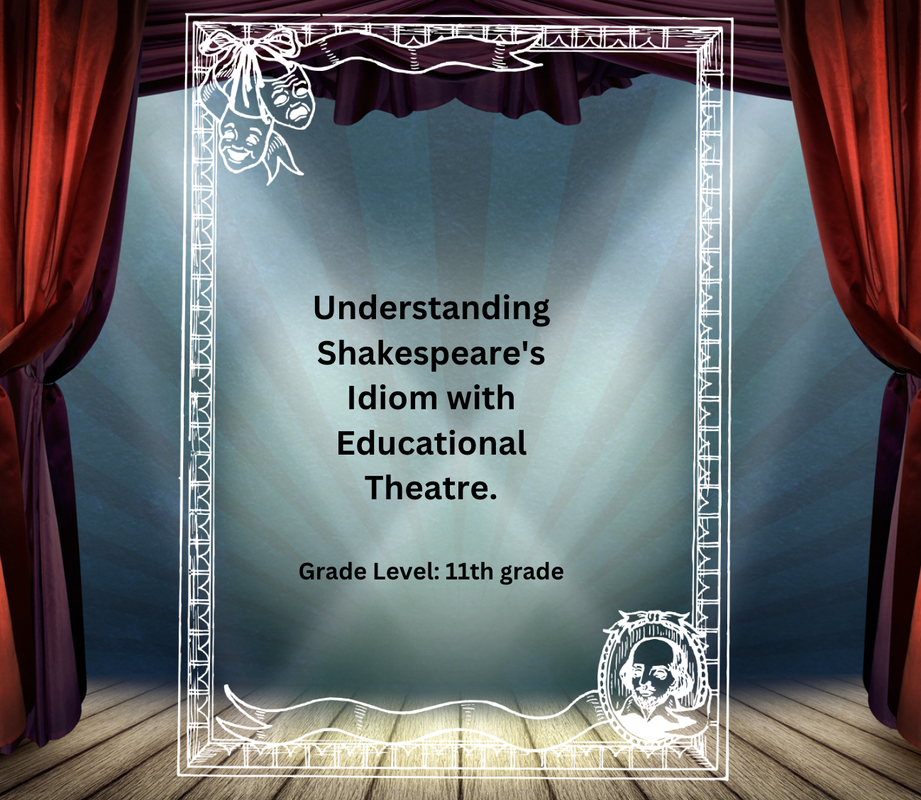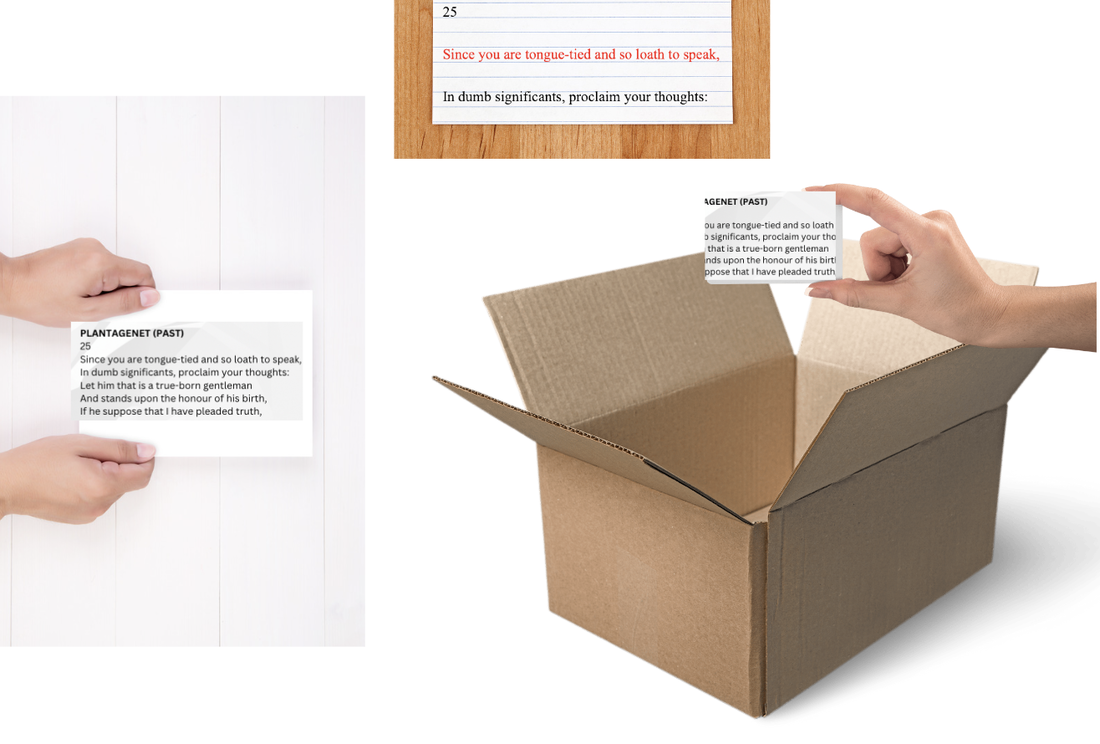Understanding Shakespeare's idiom with Educational Theatre: presentation version.Today, I introduce my theatre plan, the title is “Understanding Shakespeare’s Idiom with Educational Theater.” This play is designed for 11th grade. The play's objective is to have students use language cards to perform idioms from Shakespeare's plays that still have contemporary influence using an educational YouTube format. Because through this play, students can realize the influence of theater that connects the past and present through performing classical plays and identify ways to learn and promote the skills of classical theater. Instructional Procedures Warm-up / Opening. 1. The teacher will explain Shakespeare's plays, including idioms that are still relevant and commonly used today. Examples of plays that use this idiom include 'Romeo and Juliet,' 'Hamlet,' 'Macbeth,' 'Julius Caesar' and 'Henry VI.' 2. The teacher will show students a card box containing the idioms, their original context in the play, and their modern meaning or usage. 3. The teacher will instruct students to choose a card from the box. 4. When students choose a card, the teacher will read what is written on the card and have them express the meaning using only gestures, poses, and body motions. 5. According to the teacher's instructions, Students will express the idioms read from the cards. 6. The teacher will then instruct you to choose a scene from Shakespeare that contains your chosen idiom. 7. Students will be divided into three groups, choose a scene containing an idiom, and practice their lines. (Length of dialogue limited to 5-10 minutes) 8. Adapt the script to make it more accessible to students. They will be able to modernize their language while retaining the original idiom. 9. The teacher conducts rehearsals to familiarize students with the lines, scene context, and idioms to use. 10. Students will act out a scene containing an idiom. 11. The teacher will explain that students should use their voices when acting out scenes but only gestures, poses, and body motions during the idiom section. 12. Students act out Shakespeare's scenes according to the teacher's instructions and express them using gestures, poses, and body motions in the corresponding idioms. 13. The teacher will ask the audience to write down what it means. 14. The teacher films the contents of the rehearsal. And we will edit it for a YouTube video. (Add subtitles or explanations for better understanding.) 15. After the review, discuss idioms, their meanings, and their relevance in today's language and culture. This project can be a fun and educational way to engage students with Shakespeare's works and teach real-world use of English idioms that are still influential today. I got the idea for my educational play by reading 'Understanding Shakespeare's Idioms,' one of the Shakespeare Trust Teaching Resources. As we all know, William Shakespeare invented more than 1,700 words that are still used in English today. He used more than 20,000 words in his plays and poems. We cannot ignore these modern-day implications when we learn about Shakespeare's plays. I thought it would be good to explain the value and importance of plays that connect the past and present through Shakespeare's plays during adolescence when vocabulary, literacy, and writing skills about oneself and one's emotions are improving, so I designed Shakespeare's plays containing influential idioms. This could also be beneficial educational content for teenagers with a second language of English and adults who want to learn English. While designing this theater plan, I also realized that combining theater and educational content amplifies the effectiveness of education. It will be a beneficial exercise for me in the future when I apply these kinds of lessons to my classes.
0 Comments
Leave a Reply. |
Myungja Anna KohArtist Categories
All
Archives
July 2024
|
Proudly powered by Weebly












 RSS Feed
RSS Feed